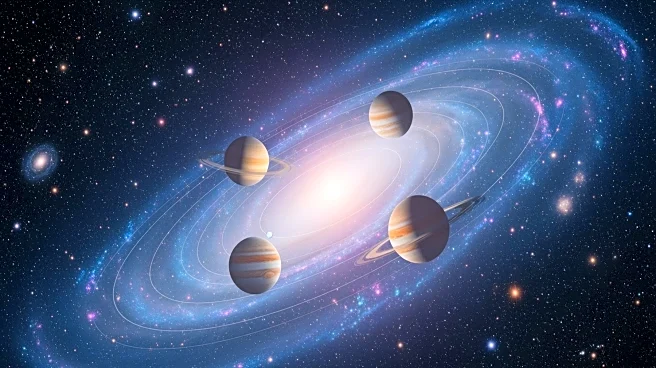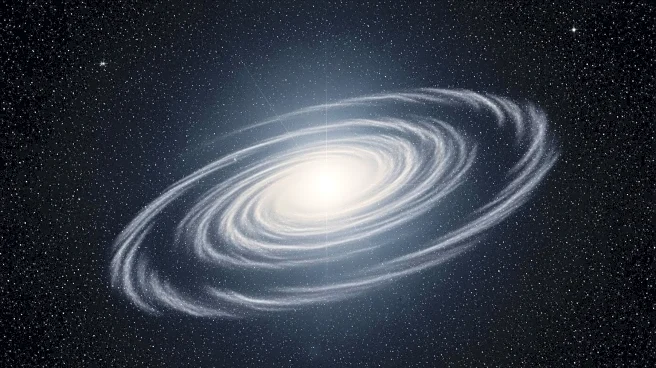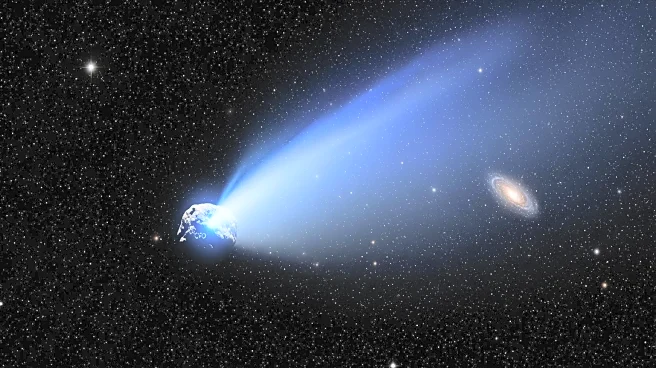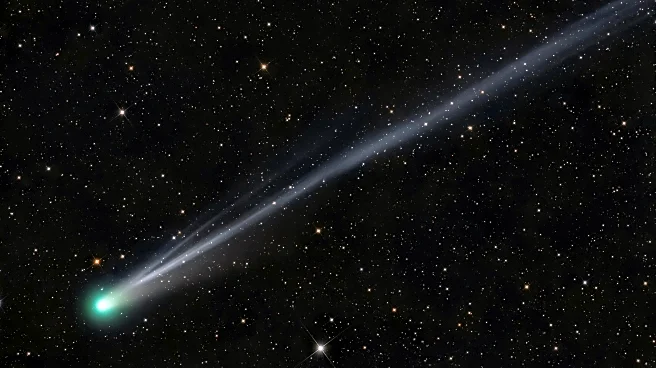What's Happening?
Astronomers are delving into the mystery of eccentric warm Jupiters, a class of exoplanets that exhibit unusual elongated orbits around their stars. These gas giants differ from hot Jupiters, which are similar
in size and mass but orbit much closer to their stars. The research, led by an astronomer at Northern Arizona University's Department of Astronomy and Planetary Science, is funded by the National Science Foundation and involves collaboration with Indiana University Bloomington. The study aims to develop a deeper theoretical understanding of how these planets formed and whether similar forces could have influenced the formation of our solar system. Observations have shown that warm Jupiters are almost always aligned with their stars' equators, a pattern that current planet formation theories cannot explain. The research involves creating a catalog of eccentric warm Jupiters using data from NASA's Transiting Exoplanet Survey Satellite (TESS).
Why It's Important?
Understanding the formation of eccentric warm Jupiters could provide insights into the processes that shaped our solar system and other planetary systems. These findings may challenge existing planet formation theories and lead to new models that explain the alignment and elongated orbits of warm Jupiters. The research could uncover hidden truths about the evolution of our solar system and the creation of similar systems. By exploring various hypotheses, such as the influence of companion planets or interactions with gaseous nebulas, astronomers hope to reveal the physical processes that govern planetary formation. This knowledge could have significant implications for the field of astronomy and our understanding of the universe.
What's Next?
The research team plans to continue developing models to explain the formation of eccentric warm Jupiters. Next year, the lead astronomer will hire a graduate student skilled in creative problem-solving to assist with the study. The team will explore various hypotheses, including the role of companion planets and the influence of stars' internal waves on planetary orbits. The findings from this research could lead to publications that challenge existing theories and offer new perspectives on planetary formation. As the study progresses, astronomers hope to gain a clearer understanding of the forces shaping these unusual exoplanets.
Beyond the Headlines
The investigation into eccentric warm Jupiters could have broader implications for the field of astronomy, potentially altering the way astronomers map planet formation. Discoveries related to the interaction between planets and their surroundings, or the influence of stars' internal waves, could lead to a reevaluation of existing models. This research highlights the complexity and variability of extrasolar systems, offering a glimpse into the diverse ways planets can form and evolve. The study underscores the importance of creative and innovative approaches in scientific research, as astronomers seek to unravel the mysteries of the universe.













